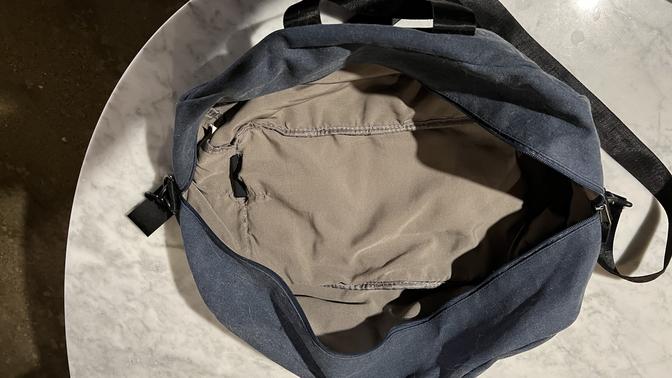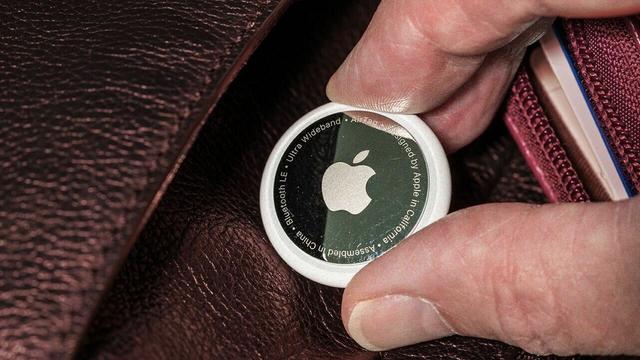How to Protect Yourself Against AirTag and Tile Stalking
Bluetooth trackers, including Apple's AirTag and all of the Tiles, are terrific little tools for helping you find your lost keys or remote. Unfortunately, they can also be easily slipped in a bag or affixed on a car for the purpose of stalking. Apple has released a number of AirTag updates to limit this possibility, as well as an app for Android users that lets them manually search for rogue AirTags, but that doesn't change the fact that these tiny $30 trackers can still be used in nefarious ways.
Fortunately, there are several steps you can take to protect yourself against Bluetooth tracker stalking. We've created a basic guide to help you assess your risk, know what to look for, and disable any foreign Bluetooth tracker you may find.
Consider Your Risk Profile and Create a Safety Plan
Technology-facilitated abuse is the use of any technological means to coerce, stalk, or harass another person. According to the CDC’s latest data, 16% of women and 3.7% of men have been victims of stalking in their lifetime. There are caveats here though: This report doesn't separate physical stalking versus cyberstalking, and it was released well before Apple's popular AirTag hit the market. Needless to say, technology has changed significantly since then, so there’s a good possibility these number don't accurately reflect the current state of cyberstalking.
Although anyone can be the target of a cyberstalker via an AirTag, Tile, or hundreds of different tracking apps, certain groups appear to be more vulnerable than others. There is little data related to stalking using Bluetooth trackers specifically, but we can extrapolate based on existing stalking and technology-facilitated abuse. While this list is by no means comprehensive, you may want to take extra precautions if you fall into any of the following groups:
Women between the ages of 18 and 24 and survivors of intimate partner violence are far more likely be stalked.
LGBTQ+ people are more vulnerable to stalking than the general population, according to SPARC, the Stalking Prevention and Awareness Resource Center. BIPOC teens and young adults, as well as active duty service members who identify as LGBT have a higher risk factor in this group.
Journalists, especially local TV news reporters, are more likely to be the victims of technology-facilitated abuse and stalking. Amanda Hess, critic-at-large for The New York Times, discusses her own experience with harassment and stalking by a man convicted of murder, and how the police failed to take the issue seriously. Hess writes, “None of this makes me exceptional. It makes me a woman with an Internet connection,” before going on to discuss the experiences of other female journalists and bloggers.
Activists, dissidents, and human rights advocates are also more likely to be the targets of technology-facilitated abuse, especially in countries with with poor human rights records. The United Nations Human Rights Office offers resources and an overview of more specific threats for people in this group.
If you fall into any of these groups, head to the Technology Safety website to create a safety plan and find advocates and other resources.
Regularly Inspect Your Belongings
AirTag and Tile trackers are small, making them easy to hide. Here are some common places to look to make sure you're not being tracked, and ways to make your life a little more tracker-proof.

Take a few minutes to empty your bag and pockets each day. Check to make sure all of the seams arein tact and you don’t feel any awkward lumps or hard surfaces. Trackers like the Tile Slim are thin enough to be easily placed under the lining at the bottom of a bag where interfacing or foam are used to help it maintain its shape, making the tracker less noticeable.
Stick to bags and purses that have zippers or magnetic enclosures. If you carry a backpack or other bag with lots of side pockets, consider using iron-on hem tape to permanently seal them, or use inexpensive snap-style buttons to make them harder to open. If you have a leather bag or simply don’t want to deal with securing the side compartments, a dry cleaner can easily add snaps and sew pockets shut or even remove them.
Bluetooth trackers can easily be hidden in a bag under the lining(Photo: Steven Winkelman)If you’re traveling, use an FAA-approved luggage lock and carefully check your bag and all of its contents when you leave and arrive. Keep your luggage locked when you leave your room, and check the pockets of any items you send out to be laundered or pressed.
If you use a PO box or rent a mailbox, open all of your mail before returning home. Be especially cautious of boxes or unknown envelopes as these can contain Bluetooth trackers. Remove and inspect all the packing material for boxes and, if possible, dispose of your trash before you leave the building.
If you use a PO box, mailbox service, or USPS General Delivery, always check your mail before returning home(Photo: Steven Winkelman)If you live in a rural area, don't have carrier delivery, or request General Delivery service, never leave the post office until you’ve checked and inspected all of your mail. In these situations, a stalker who may have an idea of your location can send a package via General Delivery and it will arrive at your post office. If you wait to open your mail until you get home, the person might be able to figure out your home address.
If you ride a bike, take a moment to check under the saddle to make sure a tracker hasn’t been affixed to it.
Unfortunately, there are lots of places to hide trackers on cars, but it’s worth checking behind license plates, the opening between the hood and windshield, in the wheel wells, and along the underside of the front and rear bumpers.
Apple AirTags: Everything You Need to Know13 Tips for Public Wi-Fi Hotspot SecurityA Bluetooth tracker can easily be placed on your—can you spot the one hidden here?(Photo: Steven Winkelman)How to Search for Bluetooth Trackers
If an AirTag is traveling with an unregistered person, it will begin to chirp. If you own an iPhone with iOS 14.5 or later, you’ll also get an alert on your phone. The AirTag will begin to chirp between 8 and 24 hours after the tracker is separated from its registered user; in our tests, it tends to happen sooner rather than later. If you tap your phone against the AirTag, you'll get its serial number and information on how to disable it.
If you find an AirTag that doesn’t belong to you and you don’t own an iPhone, you can tap it against any phone’s NFC reader to get the serial number and instructions on how to disable it. It’s important to keep track of the serial number, since Apple works with law enforcement around the world to assist in cyberstalking cases. Apple also has a Tracker Detect app in the Google Play Store that allows you to manually search for AirTags using Android phones.
Unfortunately, locating a stray Tile tracker isn't quite as easy. There are no audible alerts for Tiles that are separated from their owners for extended periods of time, and as of this writing, the company doesn’t offer an option to manually scan for trackers—though it says the Tile app will be updated in early 2022 to include a scanning feature.
Macworld recommends BLE Scanner for Android users and Bluetooth BLE Device Finder on iOS to manually scan for trackers. It’s worth noting that if you live in an apartment, have roommates, or simply own a lot of tech gear, you may find dozens of Bluetooth devices in range with generic names.
How to Disable Bluetooth Trackers
Again, AirTags are a little easier to deal with since you can tap them against your phone and get instructions on how to disable them. But if your phone doesn’t have NFC, disabling an AirTag is still very simple. Just place the tracker between your fingers, rotate the silver back slightly to open it, and remove the battery.
AirTags are easy to disable(Photo: Steven Winkelman)With the exception of the Tile Pro, it’s impossible to remove the battery from the rest of the current Tile tracker lineup. Don't attempt to break or crush the tracker, as the battery can burst and cause serious injuries.
If you find a tracker with a non-removable battery, submerge it in water and take it to your local authorities or dispose of it far from your house(Photo: Steven Winkelman)Tile trackers rely on Bluetooth’s limited range and on other users on the Tile network to locate devices. If you find an unexpected Tile tracker in your bag, you can significantly degrade its range by placing the tracker in a freezer bag or jar or water. After doing this, you can take it to the local authorities and file a police report, or simply dispose of it in a public garbage can that’s not near your house.
Bluetooth trackers are constantly evolving, so we'll be sure to update this story regularly as new safety methods become available.
Sign up for Race to 5G newsletter to get our top mobile tech stories delivered right to your inbox.
EmailThis newsletter may contain advertising, deals, or affiliate links. Subscribing to a newsletter indicates your consent to our Terms of Use and Privacy Policy. You may unsubscribe from the newsletters at any time.
Thanks for signing up!Your subscription has been confirmed. Keep an eye on your inbox!



